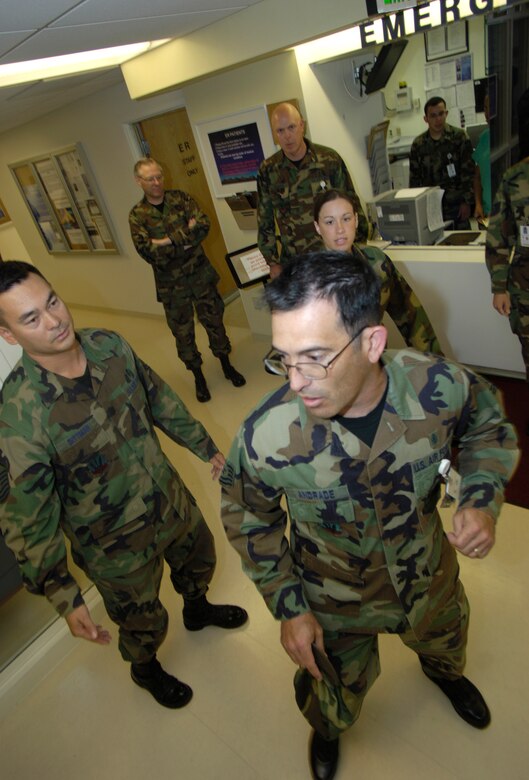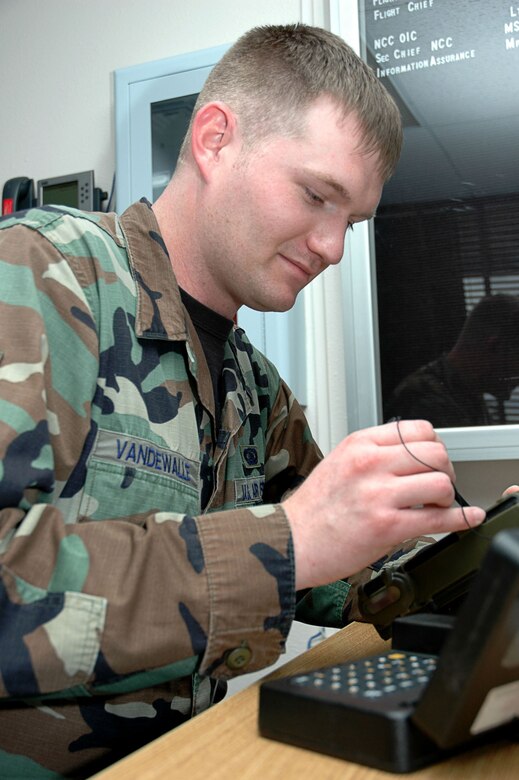Table of Content
Only four hours after the first call to report for duty was made, 95 percent of the wing's flying personnel had checked in and were ready to move. With the cessation of the crisis, the wing was relieved from active duty on November 28. The arrival of the pursuit wings and their crews caused crowding at the base and initiated the first of many housing problems. Hamilton was assigned to the USAAC 4th Air Force, on December 7, 1941, and the airfield was designated an air defense base for the West Coast as part of the Western Defense Command on January 5, 1942. On May 5, 1934, the first planes assigned to Hamilton were Martin B-10 and B-12 bombers of the 7th Bombardment Group, having been transferred from March Airfield. Shortly thereafter, amphibious reconnaissance aircraft of the 88th Observation Squadron were assigned to Hamilton.

The 22 ARS' aircraft began transferring to McConnell AFB, Kansas, in May 2002 and the squadron inactivated the following August. The 34 BS' B-1Bs began moving to Ellsworth AFB, South Dakota, in June and the squadron officially moved in September. Following the departure of these assets, the USAF re-designated the 366th as a Fighter Wing.
Jan. 6 House Select Committee condemns Trump for Capitol attack
It is not unusual for a cadet officer to command an encampment of hundreds of junior Cadets. Cadets are given many opportunities to lead and to follow; they may hold leadership positions at squadron and wing activities, and are often involved in planning these activities. Cadets may complete paperwork, command other cadets, and teach at weekly meetings and at weekend and summer events.

They provide the tools, talent and equipment for the core disciplines of aircraft structures, propulsion, avionics and electronic warfare evaluation of the latest weapon system technologies. They also host the core facilities that enable flight test and ground test—the Range Division, Benefield Anechoic Facility, Integrated Flight Avionics Systems Test Facility and the Air Force Electronic Warfare Evaluation Simulator. The Project and Resource Management Divisions provide the foundation for the successful program management of test missions. Reorganizations followed over the years; bombers and tanker aircraft once stationed there were reassigned to other midwestern air bases. Today the base’s mission is described on the official site as providing combat airpower and combat support capabilities worldwide.
Squadrons
The Coast Guard planned to sell all or most of their 50 acres of land and homes through a GSA sale in 2020. Since the Coast Guard property was not included in the base environmental studies, this area will need environmental review. On January 1, 1972, the Air Force reassigned the Air Force Reserve's 452d Military Airlift Wing from March AFB, California to Hamilton AFB. At Hamilton, the wing converted to C-130B Hercules on April 1, was redesignated the 452d Tactical Airlift Wing . In October 1973, the 452 TAW became the "host wing" for Hamilton AFB. As a result of the base closure decision regarding Hamilton, the 452 TAW transferred back to March AFB in 1976 for redesignation as the 452nd Air Refueling Wing and transition to the KC-135E Stratotanker. The 84th FIS was reassigned to Castle Air Force Base near Merced, California on September 1, 1973, as part of Hamilton's closedown, transferring its F-106s and effectively ending the air defense role of Hamilton AFB.
Assessments of these simulated raids by "...LeMay's entire command...were appalling", despite the SAC deputy commander, Major General McMullen, having instructed all bomber units to improve their effectiveness. To motivate crews and improve operational effectiveness command-wide, SAC established a competition, the first so-called "Bomb Comp" in 1948. Winners of this inaugural event were the 43rd Bombardment Group and, for aircrew award, a B-29 team from the 509th Bombardment Group.
Intercontinental ballistic missile facilities
In the spring of 1955, under their second commander/leader (September 1954 – February 1957), Captain Jacksel M. Broughton, they moved to the swept-wing F-84F Thunderstreak aircraft, in which they performed 91 air shows, and received their first assigned support aircraft, a C-119 Flying Boxcar. Cannon and ammunition drum with a smoke-generating system, including its plumbing and control switches, the removal of the jet fuel starter exhaust door, and the application of the Thunderbirds' glossy red, white, and blue polyurethane paint scheme. All the modification work is performed at the maintenance depot at Hill AFB near Ogden, Utah.
Activated 30 Aug 47 as a subinstallation of Mather AFB. Assigned as a subinstallation of Williams AAF 1 Apr 48 to provide advanced training for fighter pilots. Conducted flying and combat crew training until transferred to Tactical Air Command 1 Jul 58. In 1990, the 64th and 65th Tactical Fighter Training Aggressor Squadrons and the 4440th TFTG were inactivated in 1990 at the end of the Cold War. In November 1991, the 57th implemented the USAF Objective Wing organization which was the most comprehensive USAF reorganization plan since 1947, activating the 57th Operations Group for Nellis airfield operations and establishing the 57th Test Group.
New C-37A aircraft were delivered starting in 2001, and the CT-43 and EC-135s were subsequently removed from service. The 310th's primary mission is dedicated airlift support for the commanders of USCENTCOM, USSOCOM, and USSOUTHCOM. With the addition of the 310 AS, the wing was given its current designation as the 6th Air Mobility Wing .

In addition to the X-15 Program, AFFTC and NASA also teamed up to explore a new concept called "lifting reentry" with a series of wingless lifting body aircraft. These rocket powered-vehicles – the M2-F2, M2-F3, HL-10, X-24A and X-24B – paved the way for the Space Shuttle and future spaceplane designs when they demonstrated that they could make precision landings after high-speed gliding descents from high altitude. Throughout the 1950s, American airplanes regularly broke absolute speed and altitude records at Edwards, but nothing compared to the arrival of the North American X-15 in 1961. "Bob" White became the first man to exceed Mach 4, as he accelerated to Mach 4.43 (5,427 km/h; 3,372 mph) on 7 March.
The 456th SAW was placed on operational status upon activation with the 31st BS being redesignated as the 744th Bombardment Squadron, the wing's former World War II bomb squadron. The 903d ARS and 851st SMS designations were unchanged, however component support units were redesignated to the 456th numerical designation of the newly established wing. As under the Tri-Deputate organization, all operational components were directly assigned to the wing, no operational group element was activated. After Space Shuttle Columbia became the first shuttle launched into orbit on 12 April 1981, it returned to Edwards for landing. The airbase's immense lakebeds and its proximity to Plant 42, where the shuttle was serviced before relaunch, were important factors in its selection and it continued to serve as the primary landing area for the space shuttle until 1991.
Captain Glenn A. McConnell led the first four B-47s to RAF Brize Norton, UK. For its role in advancing jet bombardment tactics, the wing was again awarded the Air Force Outstanding Unit Award. Additional deployments were made to RAF Fairford England, June – September 1953, and at Ben Guerir AB, French Morocco , January – February 1955, October 1956 – January 1957 and October 1957. Deliveries of the new Boeing B-47A Stratojet to the Air Force and SAC began in December 1950, and the aircraft entered service in May 1951 with the 306th Bombardment Wing. The 306th was intended to act as a training unit to prepare future B-47 crews. As such, the B-47As were primarily training aircraft and were not considered as being combat ready.

No comments:
Post a Comment